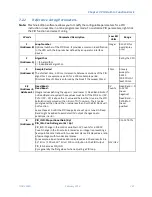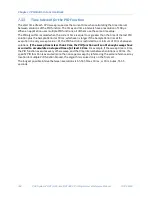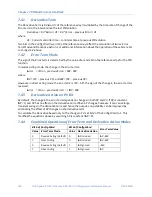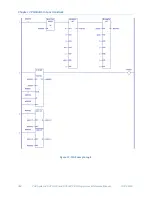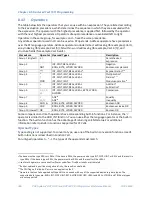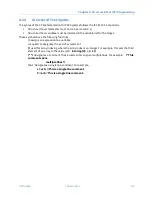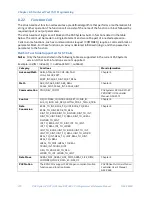
Chapter 7. PID Built-In Function Block
GFK-2950C
February 2018
355
7.4
PID Algorithm Selection (PIDISA or PIDIND) and Gain
Calculations
The PID function supports both the Independent Term (PID_IND) and ISA standard (PID_ISA) forms of
the PID algorithm. The Independent Term form takes its name from the fact that the coefficients for
the proportional, integral and derivative terms act independently. The ISA algorithm is named for the
Instrument Society of America (now the International Society for Measurement and Control), which
standardized and promoted it.
The two algorithms differ in how words 6 through 8 of the reference array are used and in how the
PID output (CV) is calculated.
The Independent term PID (PID_IND) algorithm calculates the output as:
PID Output = Kp * Error + Ki * Error *
dt
+ Kd * Deri CV Bias
where Kp is the proportional gain, Ki is the integral rate, Kd is the derivative time, and
dt
is the time
interval since the last solution.
The ISA (PID_ISA) algorithm has different coefficients for the terms:
PID Output = Kc * (Error + Error *
dt
/Ti + Td * Derivative) + CV Bias
where Kc is the controller gain, Ti is the Integral time and Td is the Derivative time. The advantage of
PID_ISA is that adjusting Kc changes the contribution for the integral and derivative terms as well as
the proportional term, which can simplify loop tuning.
If you have the PID_ISA Kc, Ti and Td values, use the following equations to convert them to use as
PID_IND parameters:
Kp = Kc, Ki = Kc/Ti, and Kd = Kc * Td
The following diagram shows how the PID_IND algorithm works:
Ki
*
Error
*
Δ
Time
Integral Term =
Proportional Term =
Kp
*
Error
Dead
Band
CV
Bias
Slew
Limit
Clamp
Upper / Lower
Polarity
CV
SP
PV
Error Term
Sign
Deriv Action
+/-
Δ
Value
Δ
Time
Derivative Term =
Δ
Time
Kd
*
Δ
Value
-/+
+
Previous Integ. Term +
Figure 16: PID_IND Diagram
The ISA Algorithm (PID_ISA) is similar except that its Kc gain coefficient is applied after the three
terms are summed, so that the integral gain is Kc / Ti and the derivative gain is Kc * Td.
Bits 0, 1 and 2 in the Config Word set the Error sign, Output Polarity and Derivative Action,
respectively.
Summary of Contents for PACSystems RSTi-EP
Page 357: ......
Page 466: ...Chapter 9 Diagnostics GFK 2950C February 2018 451 ...







